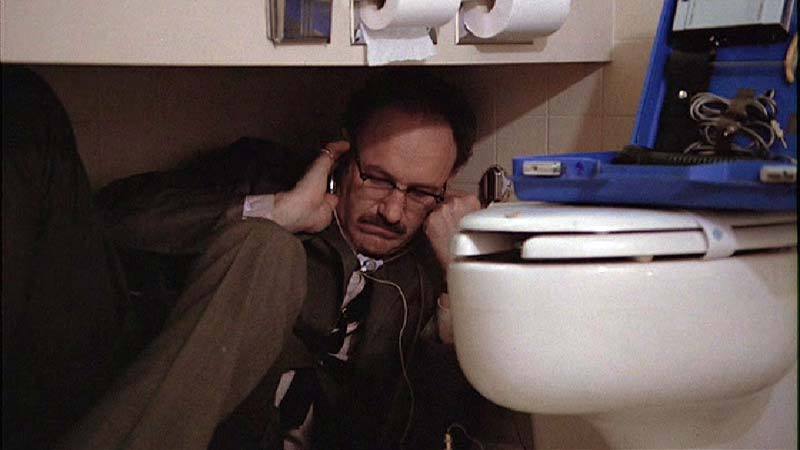As he is played by Gene Hackman in “The Conversation,” an expert wiretapper named Harry Caul is one of the most affecting and tragic characters in the movies; he ranks with someone like Willy Loman in “Death of a Salesman” or the pathetic captives of the middle class in John Cassavetes’s “Faces.” Hackman is such a fine actor in so many different roles, from his action roles like “The French Connection” to this introverted, frightened, paranoid who is “the best bugger on the West Coast.” He is, indeed, maybe the best wiretapper in the country, but he hasn’t gone back to the East Coast since a bugging assignment there led to the deaths of three people. He tries to force himself not to care. He goes to confession and begs forgiveness for not paying for some newspapers, but not for bringing about a murder — because the murder, you see, was none of his business. He is only a professional. He does his job and asks no questions: doesn’t want to know the answers.
His latest job has been a tactical masterpiece. The assignment: Bug a noon-hour conversation between two young people as they walk in a crowded plaza. He does it by tailing them with a guy who’s wired for sound, and also by aiming parabolic microphones at them from buildings overlooking the plaza. This gives him three imperfect recordings of their conversation, which he can electronically marry into one fairly good tape. He is a good craftsman, and, although the film doesn’t belabor his techniques, it does show us enough of how bugging is done to give us a cynical education.
It’s a movie not so much about bugging as about the man who does it, and Gene Hackman’s performance is a great one. He does not want to get involved (whenever he says anything like that, it sounds in italics) — but he does. After he has recorded the conversation, he plays it again and again and becomes convinced that a death may result from it, if he turns the tape in. The ways in which he interprets the tape, and the different nuances of meaning it seems to contain at different moments, remind us of Antonioni’s “Blow-Up.” Both movies are about the unreality of what seems real: We have here in our hands a document that is maddeningly concrete and yet refuses to reveal its meaning. And the meaning seems to be a matter of life and death.
The movie is a thriller with a shocking twist at the end, but it is also a character study. Hackman plays a craftsman who has perfected his skill at the expense of all other human qualities; he lives in paranoia in a triple-locked apartment, and is terrified when it turns out his landlady has a key. She explains she might have to get in in case of some emergency — his furniture might burn up or something. He explains that none of his possessions is important to him — except his keys.
He has no friends, but he does have acquaintances in the bugging industry, and they’re in town for a convention. One of them (played by Allen Garfield) is a truly frightening character. He’s the one who talks about the three murders, and he’s the one whose hateful envy reveals to us how good Harry Caul really is. A boozy scene in Harry’s workshop, with some colleagues and their random dates, provides a perfect illustration of the ways in which even Harry’s pathetically constrained social life is expressed through his work.
“The Conversation” is about paranoia, invasion of privacy, bugging — and also about the bothersome problem of conscience. The Watergate crew seems, for the most part, to have had no notion that what they were doing was objectively wrong. Harry wants to have no notion. But he does, and it destroys him.



















